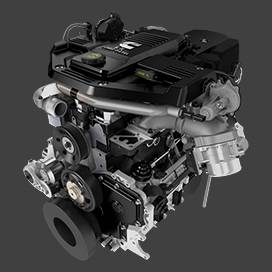Oct . 09, 2024 14:21 Back to list
Understanding the Composition of Brake Drums and Their Use of Cast Iron Materials
Are Brake Drums Cast Iron?
Brake drums are critical components in the braking systems of many vehicles, particularly those using drum brake configurations. Traditionally, these drums have been manufactured from cast iron, a material prized for its excellent heat dissipation properties and durability. However, as technology advances and automotive design evolves, it is essential to examine whether cast iron remains the standard material for brake drums and what benefits and drawbacks it presents.
The Role of Material in Brake Drum Performance
Cast iron is favored in many brake drum applications due to its ability to absorb and dissipate heat generated during braking. When a vehicle comes to a stop, friction between the brake shoes and the drum creates heat. If this heat cannot be dissipated effectively, it can lead to brake fade—a decrease in braking efficiency caused by overheating. The thermal conductivity of cast iron helps minimize this issue, allowing for consistent and reliable braking performance.
Additionally, cast iron provides excellent wear resistance. The material forms a hard, durable surface that can withstand the abrasive action of brake shoes over time. This fatigue resistance is vital, as it ensures the longevity of both the brake drum and the associated components, reducing the frequency of replacements and repairs.
Alternatives to Cast Iron
While cast iron has long been the standard, advancements in materials science have introduced alternatives such as aluminum and composite materials. Aluminum brake drums can offer a lighter weight solution, which can contribute to improved fuel efficiency and reduced stress on the vehicle's suspension system. However, aluminum does not dissipate heat as effectively as cast iron, which raises concerns regarding thermal management during heavy braking situations.
are brake drums cast iron

Composite materials, meanwhile, have started to find their way into high-performance applications. These offer a combination of light weight, strength, and potential cost savings, but they may not yet match the thermal performance of cast iron under extreme conditions.
Consumer Preferences and Industry Trends
The preference for cast iron versus alternative materials often depends on the intended application. For standard consumer vehicles, cast iron remains a reliable choice, balancing cost, performance, and durability. On the other hand, performance-oriented brands might experiment with lighter materials to enhance speed and handling while still ensuring adequate braking performance.
Moreover, eco-friendly initiatives are pushing manufacturers to consider sustainable materials that can still meet necessary safety and performance standards. As the industry continues to evolve, it is likely we will see new innovations in brake drum materials.
Conclusion
In conclusion, while brake drums have traditionally been made from cast iron due to its favorable properties, the automotive industry is exploring alternatives. Cast iron continues to dominate in most mainstream applications due to its reliability, heat dissipation, and durability. However, ongoing advancements in material technology may soon challenge the legacy of cast iron in brake drum manufacturing, leading to a diversification of materials used in the future. Ultimately, the choice of material for brake drums will depend on the specific needs of the vehicle and the preferences of manufacturers and consumers alike.
-
HINO Industrial Solutions - ¡Ң���ຽ��е��������˾ | Advanced Technology&Reliability
NewsJul.13,2025
-
HINO Industrial Efficiency-Jiangsu Hino Industrial|Productivity Optimization&Cost Reduction
NewsJul.12,2025
-
HINO-¡Ң���ຽ��е��������˾|Advanced Industrial Solutions&Energy Efficiency
NewsJul.12,2025
-
Premium Brake Drum Iveco – Durable Drum Brake Drum & Brake Shoe Solutions
NewsJul.08,2025
-
High-Performance Brake Drum Liza for Enhanced Safety Reliable Drum Brake Drum & Brake Shoe Solutions
NewsJul.08,2025
-
High-Quality Brake Drum MAZ – Durable Drum Brake Drum & Brake Drum and Brake Shoe for Optimal Performance
NewsJul.07,2025
